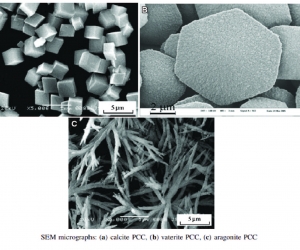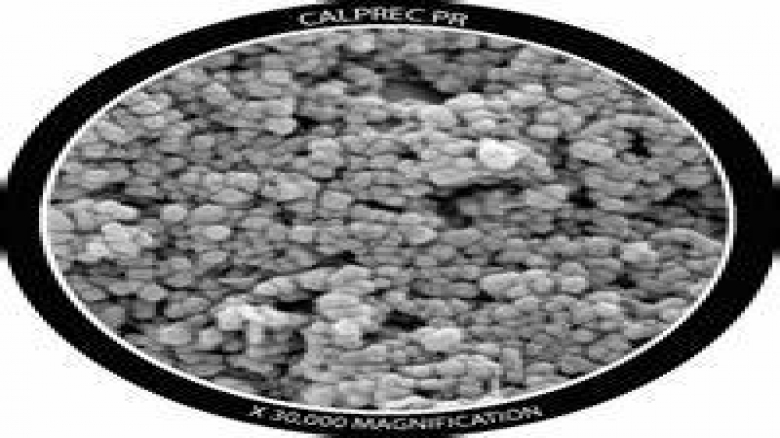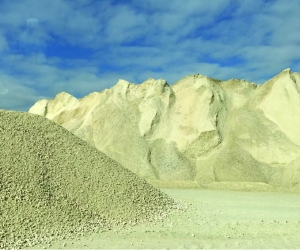Publish date:
20 July 2021
Precipitated calcium carbonate is widely used as fillers, and finds uses in many products from asphalt to paper. The higher value, nano-grade PCC (top cut-off size 100 nm) is used as an efficient filler in the paper, pharmaceutical, paint, plastic, caulk and sealants industries.
Precipitated calcium carbonate fillers for papers
Papers are generally made of cellulosic pulp fibers, a derivative of renewable natural bio-resources comprising wood and non-wood lignocellulosic constituents. In the production of paper grades such as papers for printing and writing, fillers are commonly the second most essential piece of the paper stock provided their added volumes are taken into consideration. Worldwide, the application of fillers in papermaking is now a very common practice to meet the needs of paper industries. The addition of fillers in papers can bring about numerous benefits, such as cost and energy savings, improvement in optical properties, printability, and appearance of paper products (Deng et al. 2008). The purpose of adding PCC fillers to papers is to reduce cost and also to increase functional roles such as optical properties, smoothness, ink adsorption, durability and sheet formation. Other fillers such as talc, kaolin, grounded calcium carbonate and titanium oxide have several limitations and disadvantages listed below:
1. Titanium oxide is highly expensive.
2. Under certain conditions, the above-mentioned fillers can cause abrasion and dusting.
3. They have low optical properties when compared to PCC fillers.
4. A higher solid content of the circulating system with increased loading level of these fillers.
5. Poor filler retention.
Alkaline nature PCC has a huge benefit in wood-free paper grade produced from chemical pulp. This is because it creates a stable buffered system with strength improvement for most papers. Studies show that modification of PCC with weak acid and calcium chelating agent greatly improves acid-tolerant properties of papers. Refractive index of paper can be enhanced by adding solution of zinc chloride in calcium carbonate suspension, which produces aragonite shape PCC filler under certain parameters with coated zinc carbonate surface. Chitosan, acetic acid, and hydroxide used to modify precipitated calcium carbonate filler for making paper. The strength properties of the filled papers were improved significantly by encapsulated chitosan on the PCC filler surfaces through alkali precipitation. Use of carboxymethyl cellulose and alum on PCC filler resulted in the enhancement of brightness, opacity, strength as well as the air permeability of the paper. The addition of certain fillers like PCC in papermaking can improve drainage and increase water removal rates in the pressing and drying processes. The filtration resistance of compressed pulps was abridged by adding PCC fillers, which results in enhanced drainage properties of the paper. The utilization of definite rhombohedral calcium carbonate fillers could aid drainage.
Precipitated calcium carbonate fillers for plastics
Plastic products are found almost everywhere in homes, cars and workplaces. Plastic manufacturers have developed whole ranges of polymers with ever increasing performance and/or economy which have helped plastics replace more traditional materials such as wood, metal and glass for many applications. PCC has been extensively used as filler in plastic industries with the main purpose of reducing cost. However, the addition of PCC as fillers in plastic can also lead to greater impact resistance associated with higher elastic modulus, improved thermal conductivity and shortening of production cycle. PCC is one of the most abundant fillers used in the plastics industries with a definite particle size to meet polymer resins requirements. Precipitated calcium carbonate is usually used in plastics as a bulking agent to substitute the costly polymers. Most properties of the unadulterated polymer are subject to transformation as a result of filling and, as a result, different material is produced by the amalgamation of polymer with inorganics. The properties of the resulting fused material are determined by the properties of the constituents, type of resin and filler, filler crystal size, shape and modulus, the absorption of filler in the polymer medium and the kind of interaction amid the filler bits as well as filler particles and host polymer. Due to surface modification of PCC, a good dispersity of PCC in a polypropylene (PP) medium was attained and, therefore, thermal stability was improved. The strong interface of PCC with PP matrix also produced an increase in yield and tensile strength of the polypropylene (PP). The effect of PCC fillers on the properties of high-density polyethylene (HDPE) and its nanocomposite through differential scanning calorimetry (DSC) and thermomechanical analyzer (TMA) tests. The results of DSC tests showed that the addition of nano-sized precipitated calcium carbonate to HDPE caused an increment in the heat capacity, sensible heat and crystallinity index. The TMA results showed an increase in the dimensional steadiness of HDPE as nano-sized precipitated calcium carbonate was added to it. Young’s modulus of polyethylene can be increased by about 70% as 10 vol% nano-sized precipitated calcium carbonate was introduced to it. Also dimensional stability of HDPE was improved by addition of nano-sized precipitated calcium carbonate.
Precipitated calcium carbonate fillers for paint
Precipitated calcium carbonate fillers are largely used to reduce the consumption of expensive TiO2 in various paint formulations. A typical formulation may contain a mixture of PCC, combined with micronized talc or calcined clay. Certain carbonate grade fillers can save 10–30% of the cost using expensive TiO2. GCC is the main extender in the
paint industry, particularly where the requirements and specifications are not strict. However, high whiteness and brightness are progressively becoming the norm so more PCC is now being used. PCC is well established as the low price extender with a range of other valuable properties, such as its brightness and its good weather resistance. The good dispensability of PCC in water-based systems makes it ideal for low solvent paints, while its low oil absorption is an advantage for high-solid coating. PCC is particularly well suited for interior decorative low-gloss paint. About 10–35% by volume of carbonate filler is typically incorporated into basic solvent or water-based emulsion paints depending on the final application and the sheen required. The nano-precipitated calcium carbonate is used to control the flow properties, to provide body, and to maintain dispersion. Most commonly, 5–14 lm PCC is used in flat and semi-gloss paints, while 5–1 lm ultrafine sizes may be used in gloss finishes to help adjust consistency and minimize paint sag.
Precipitated calcium carbonate fillers for sealants and adhesives
Adhesives and sealant are widely utilized in modern industrial manufacturing processes. The former are used mostly to hold or bind together various substrates, while the latter are employed to stop the movement of water, dirt, and air through joints. PCCs, when used as fillers in a liquid system such as sealants and adhesives, effectively control the shrinkage, sag, and the thixotropic properties. Precipitated calcium carbonate fillers are broadly used in adhesive and sealant composites for cost reduction, rheology modification and strengthening. Carbonate filler grades used range from coarse (45–30 lm) for the paste to fine (15–1 lm) for adhesives, caulk and sealants (Said et al. 2013). Usually, the PCC rhombohedral crystal form with a particle size less than 0.1um is used, although in powder form these crystals are aggregated largely to 1 lm. However, scalenohedron PCC is used in sealant production, and PCC loading can be up to 85% by weight.



